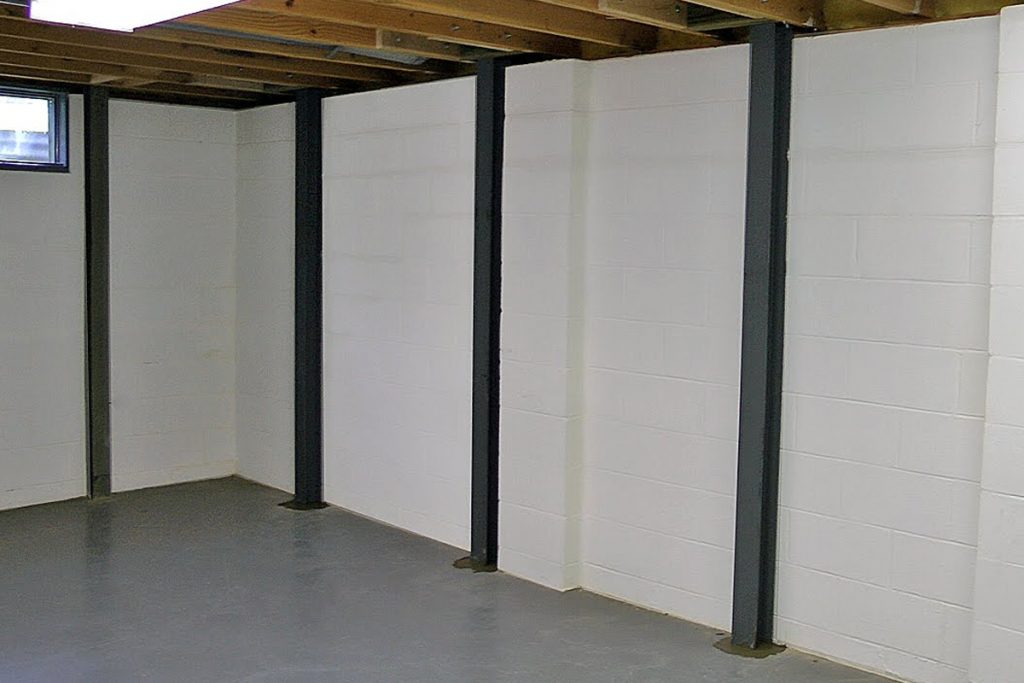When basement leak repairs are conducted from inside a basement, the interior side of the foundation walls is visible. Under these conditions it is possible to inspect the condition of the foundation; this is when cracks in poured concrete and cinder block walls are easily assessed. This inspection affords a skilled waterproofer the opportunity to assess the cracks; some of which may require stabilization. For concrete block or cinderblock foundations, some observed cracking may justify reinforcement of the foundation walls to prevent wall failure.
Poured concrete crack stabilization and concrete block / cinderblock foundation wall reinforcement are two of the services that we offer.
Poured concrete crack repair
There are two facets to poured concrete crack repair:
- Basement crack leak repairs; and
- Crack stabilization.
Basement leak repairs
Foundation crack leak repairs are accomplished via the following methods:
Crack stabilization
The swelling and shrinkage of soils resulting from the changing water content of the soil, freezing and thawing cycles, and thermal cycling cause foundation cracks to be subjected to everchanging tensile and compressive forces. Furthermore, cracks may also move due to settlement of the footing supporting the foundation walls.
Tensile forces in particular are responsible for the majority of concrete crack repair failures; assuming that the crack repairs were done properly in the first place. Tensile forces created by ongoing footing settlement require stabilization of the footing; this stabilization is accomplished by helical piering and other foundation repair techniques that are out of scope for this discussion. Below is an image of foundation wall failure attributable to significant footing settlement.
Concrete cracking due to footing settlement
The image above is not representative of the majority of foundation cracks. Relatively minor tensile forces can be counteracted using relatively simple crack stabilization techniques such as countersunk carbon fiber staples.
Concrete block / cinderblock foundation wall reinforcement
Concrete block / cinderblock walls tend to exhibit primarily two cracking patterns; however, there are others. In the image below on the left one can observe classic “step cracking”; this pattern is the result of footing settlement. In the image on the right you will observe a horizontal crack within the mortar joint beneath the top course of blocks; in this particular case, the crack is the result of soil pressure at grade height.
The two images above represent typical cracking found in many concrete block basements. Depending upon the severity of footing settlement and the location of horizontal cracking of the mortar joints it may be possible to reinforce the foundation walls using carbon kevlar reinforcing straps. This is one of the services we offer and it is significantly cheaper than helical piering. Below is an image of a typical reinforcing strap installation.
Follow this hyperlink for more information on concrete block cinder block foundation wall reinforcement. If you believe that your foundation is a candidate for carbon kevlar reinforcement Contact us.
